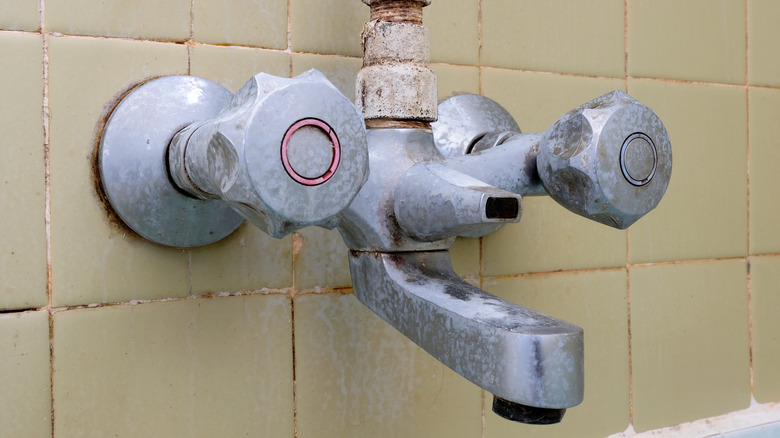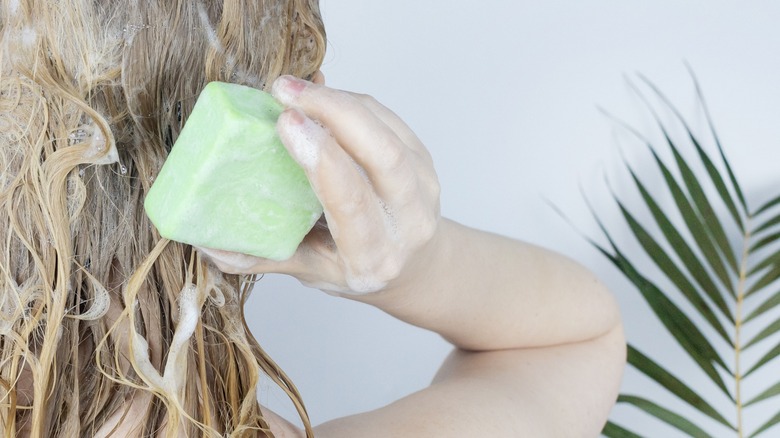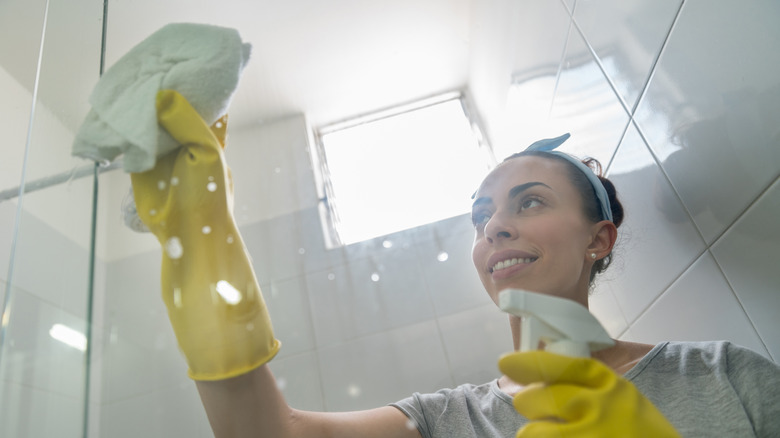One Mistake You're Making That Is Creating More Soap Scum In Your Shower
Stubborn soap scum can make it seem impossible to get your shower clean and sparkling once again. It is incredibly difficult to remove this residue once it hardens onto your shower surfaces. Substances like vinegar and baking soda can help get rid of soap scum, but wouldn't it be great to prevent it altogether? It turns out that bar soap is responsible for particularly pesky soap scum that is more difficult to get rid of than residue left behind by liquid soaps.
Bar soap is preferred by many because it is typically inexpensive and does not come in plastic packaging, so it produces less waste than liquid soap. However, if you are a fan of bar soap, you are more likely to struggle with a soap scum problem. This may be especially frustrating for those with glass shower doors. The residue makes glass unsightly and can be frustrating to have to scrub off of shower doors every day. If you do not keep up with daily soap scum removal, it will harden over time and become even more difficult to get rid of.
Why does bar soap leave behind stubborn soap scum?
So, why does bar soap leave behind soap scum that is so much worse than residue produced by liquid soap? It's all in the ingredients. Bar soaps are often made with fatty acids and talc. When these ingredients come into contact with the minerals in your tap water, soap scum is created. Hard water makes it even more likely for stubborn soap scum to form due to its high mineral content.
Your home may benefit from a water softener if you have a hard water problem that is making soap scum removal even more challenging. This will help prevent the residue from building up on shower surfaces in the first place. Other methods that may help you prevent soap scum build-up include switching to liquid soap. Unlike bar soap, liquid residue can easily be scrubbed away from surfaces.
If you insist on sticking with a bar, you can prevent soap scum by cleaning your shower walls, door, and floor after each use. This will prevent the residue from hardening. Finally, be sure to squeegee your shower door and walls before soap scum has a chance to solidify. This is also a great way to keep glass shower doors clear.
How to remove soap scum left by bar soap
Although it is difficult to remove soap scum created by bar soap, the task is not impossible. Vinegar is often used to remove this stubborn residue because its acidity breaks the substance down and makes it easy to simply wash away. To create a vinegar solution to remove soap scum, combine an equal amount of water and vinegar in a spray bottle and spray onto any residue you spot throughout your shower. Remember to check your floor, walls, and door as well as any shelving you have in your shower. It can be difficult to spot soap scum on white surfaces, so be sure to take a close look. Allow the solution to sit until you notice the substance start to lift. You may then scrub and rinse the soap scum away. It should be much easier to remove after soaking in the vinegar spray.
If you have a natural stone shower, you should know that this vinegar solution will not work for you. Vinegar is too acidic for natural stone surfaces and will damage sealants. There is also a chance that it will result in discoloration. Soap scum can be removed from natural stone with non-acidic soap scum remover. You may also create a solution by adding ½ cup of ammonia to 1 gallon of water. Exposing natural stone to ammonia for long periods of time can also cause damage, so this soap scum removal method should be used sparingly.


